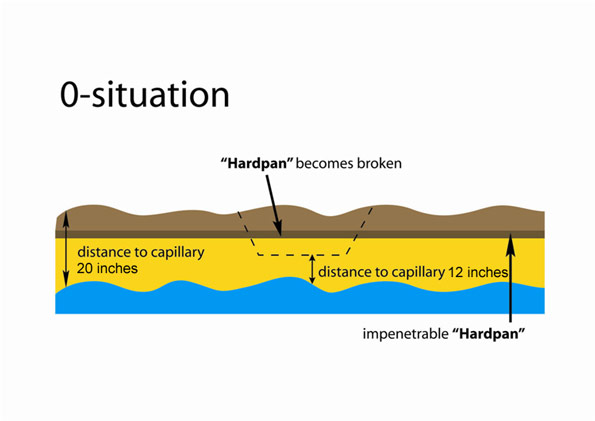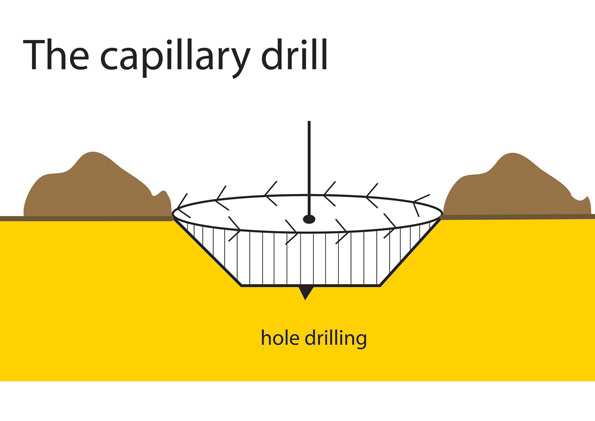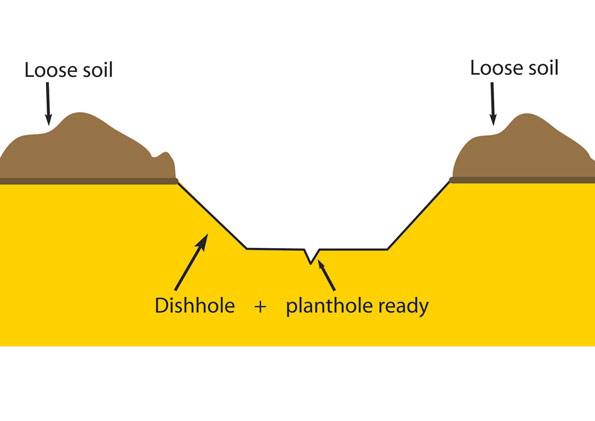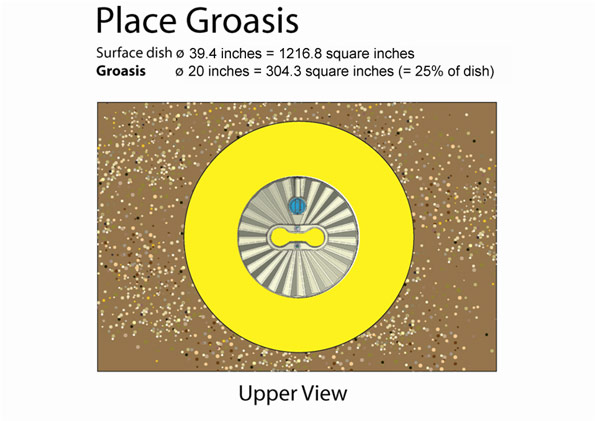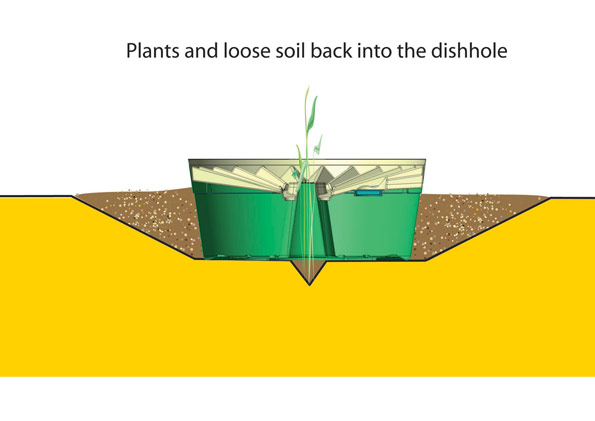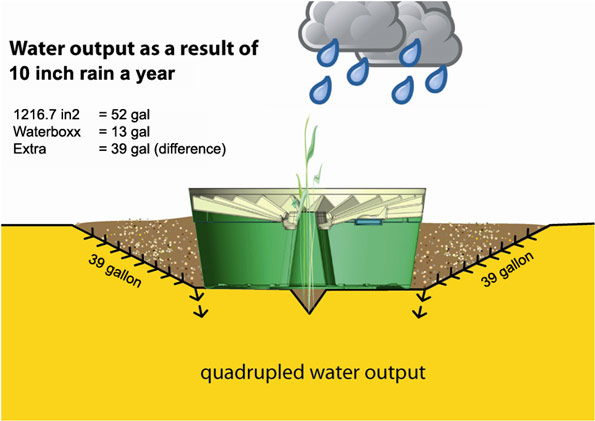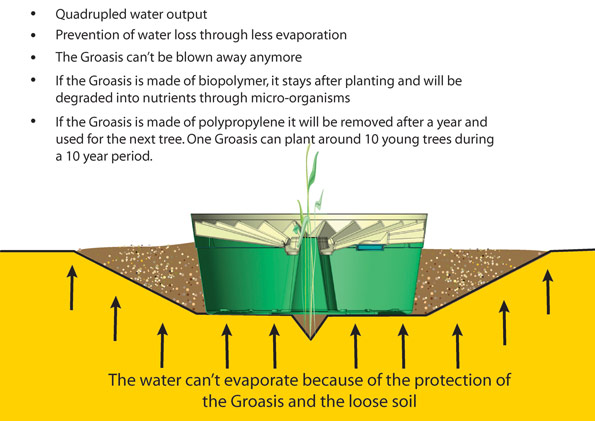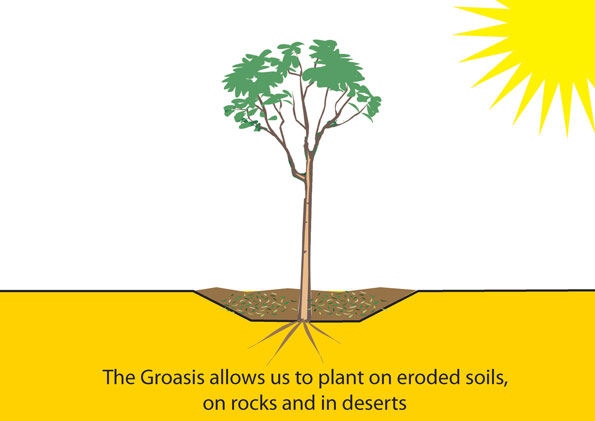The capillary drill to plant in deserts and on rocks
In order to have better results from the Groasis Waterboxx, Groasis has developed the Groasis capillary drill.
The reasons for developing this machine were:
- Planting in deserts and digging planting holes by hand is too hard work;
- The soil is often too hard (caused by the sunshine and drying out) to even be able to dig a planting hole;
- When placing the Waterboxx below soil surface level, strong winds cannot blow it away;
- In many eroded areas and deserts, there is a surface hardpan that young trees are unable to break through with their root system;
- When planting trees 20 cm (8") deeper into the soil, their roots do not have to break through the hardpan, and they are already 20 cm closer to the capillary hang water;
- If the work is too labor intensive, too many workers are needed; and it is often impossible to organize housing, food, washing, drinking, etc. for so many people in desert areas;
- When it rains in deserts, it often rains very hard and quickly; and there is a lot of runoff water. As the soil is too hard for water to penetrate, it flows immediately to the lowest places, and in most cases, will be transported by rivers that are 11 months dry, to even lower areas. This water doesn’t even get a chance to get into the soil and near the tree roots;
- The work can be planned - calculating the number of trees to be planted per man-hour, etc. In this way, the cost of restoring deserts is easier to calculate.
- With the capillary drill, it is possible to better organize time frames of planting periods.
Look at the images that explain how the capillary drill can help combat desertification.
- The capillary drill
- Planting with the capillary drill in San Mateo Zaragossa, Spain (June 2010)
- Capillary drill tests in Spain (May 2010)
Look at the graphic designs with explanation.
